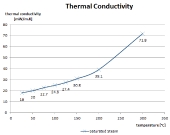Mike:
Near enough to the lake (kinda: it back fills the creek -from which I pump- once the melt comes), but the melt doesn't come until June/July.
Thanks for your thoughts!
S Bengi:
The creek bed is not unfrozen, unfortunately. It's also the gloopiest soupiest silt you ever did see when it does melt. So unfortunatly no well digging there. It's great once the water rises, but pretty useless until then (other than for bird and beaver watching!).
Less water: I hear you. I've planted into
cob walled raised beds (beds need to be raised so they thaw earlier and cob is great
solar heat sink). The beds are dug down 2-3 feet and back filled with rotten
wood, branches, fungus... basically bed/hugel hybrids with some thermal mass for extra measure. They preformed well last year and I'm hoping some shade cloth and
Ruth Stout methods will help even more this year.
I'm only on a flat half acre so the creek and the roofs are the main water features. They do OK other than right at planting time when we haven't seen little rain for about 7 months. I really only need a few thousand liters for the first planting after the frost. Our entire growing season is less than 100 days... but we get 22 hours of sunlight!
Other oddities up here include: traditional mulching just insulates your soil, it never gets warm and nothing matures. Some people use black plastic but... no. There must be other solutions. Hugels can become yearlong ice cubes. I'm hoping the fairly dry wood I built my beds from will actually act more as insulation from the ground, rather than a sodden mass of (frozen) water.








